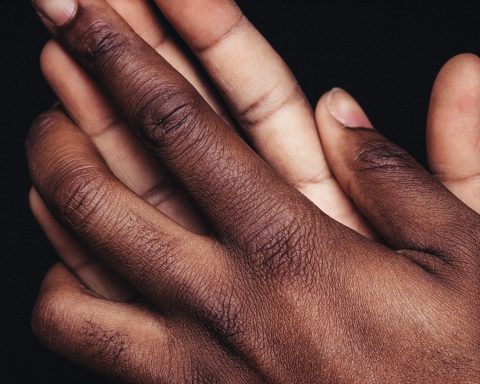
 Chiara Cotronei (left) and Isaac Bonisteel (right) are 5th year medical students at the University of Edinburgh, both passionate about social justice and equity in health. See Twitter: @EdinburghHihs and https://shihedinburgh.wixsite.com/website.
Chiara Cotronei (left) and Isaac Bonisteel (right) are 5th year medical students at the University of Edinburgh, both passionate about social justice and equity in health. See Twitter: @EdinburghHihs and https://shihedinburgh.wixsite.com/website.
Iam sitting in the corner of a dimly lit supply cupboard. I am a medical student shadowing an outreach clinic, in a support centre for those who are living on the streets. In contrast to my GP placement in the wealthy West-End of Edinburgh, there is a significant lack of space, privacy, and equipment. None of the patients we meet have secure housing, many are passing through the city as part of complex journeys, and all are trying to make the most of this one-time encounter. This is what healthcare access looks like outside of the mainstream.
Inclusion health refers to the health of groups who are socially excluded, experience stigma or discrimination, and have multiple risk factors for poverty. Among these are people experiencing homelessness, migrant populations, prisoners and sex workers.1 In these populations one finds some of the worst health outcomes relating to mortality, morbidity, service use and, more recently, COVID-19 outcomes.2,3,4 Despite this, medical education in inclusion health is limited.5,6 Students often lack real-life experience and have few or no interactions with these groups, so intergenerational stereotypes and stigma are carried forward.6 This begs the question, how can the doctors of tomorrow improve these outcomes if they are bound by the same shortcomings as their predecessors?
In [socially excluded] populations one finds some of the worst health outcomes relating to mortality, morbidity, service use and, more recently, COVID-19 outcomes.
We began by volunteering, “trialling” shifts in night shelters and outreach buses (as well as supply cupboards). Here we learnt how healthcare workers can best support those who are particularly vulnerable and connected with people from different walks of life. During our volunteering, we saw how experiential learning could help us grow as people and clinicians, and how effectively it could address the limitations in education that we had set out to address.
During the COVID-19 pandemic, in collaboration with the Edinburgh Access Practice (EAP), we recruited student volunteers for the first time. Students assisted with administration at the practice, which provides care to people experiencing homelessness and other vulnerable groups, by delivering prescriptions and methadone to support those in self-isolation.
Growing interest in our project has led to the founding of the Homelessness and Inclusion Health Society (HIHS), that now has an enthusiastic 14-person committee. Our goal is to be active over the long term and to have a sustained impact. To attain this vision, we have worked to increase inclusion health teaching across the clinical curriculum, hosted advocacy events and ran social-media campaigns. More recently, we organised our first international student conference and worked with the EAP in providing outreach COVID-19 vaccination services.
Justice in healthcare means including the needs of those who are marginalised.
From a simple idea and the desire to play our part, we have worked to bridge the gap between our student body and community, promote a neglected aspect of health education and address health inequities close to home. This is in no small part thanks to the support and guidance of the Centre of Homelessness and Inclusion Health, the Edinburgh Access Practice, the University of Edinburgh Medical School and several incredible 3rd sector organisations.
Our ambition is that other students and medical schools will follow the HIHS model, identifying local inequalities and creating opportunities to address them. By becoming advocates and professionals that are able to better care for all members of our society, we can all play our part in shaping our communities to be truly inclusive.
References
1. Luchenski S, Maguire N, Aldridge RW, Hayward A, Story A, Perri P, et al. What works in inclusion health: overview of effective interventions for marginalised and excluded populations. The Lancet [Internet]. 2018;391(10117):266–80. Available from: http://dx.doi.org/10.1016/S0140-6736(17)31959-1
2. Aldridge RW, Story A, Hwang SW, Nordentoft M, Luchenski SA, Hartwell G, et al. Morbidity and mortality in homeless individuals, prisoners, sex workers, and individuals with substance use disorders in high-income countries: a systematic review and meta-analysis. The Lancet [Internet]. 2018;391(10117):241–50. Available from: http://dx.doi.org/10.1016/S0140-6736(17)31869-X
3. Marmot M. Inclusion health: addressing the causes of the causes. The Lancet. 2018;391(10117):186–8.
4. Lone NI, McPeake J, Stewart NI, Blayney MC, Seem RC, Donaldson L, et al. Influence of socioeconomic deprivation on interventions and outcomes for patients admitted with COVID-19 to critical care units in Scotland: A national cohort study. The Lancet Regional Health – Europe [Internet]. 2021;1:100005. Available from: https://doi.org/10.1016/j.lanepe.2020.100005
5. Buck DS, King BT. Medical student self-efficacy and attitudes toward homeless patients. Virtual Mentor. 2009;11(1):32–7.
6. Masson N, Lester H. The attitudes of medical students towards homeless people: Does medical school make a difference? Medical Education. 2003;37(10):869–72.






